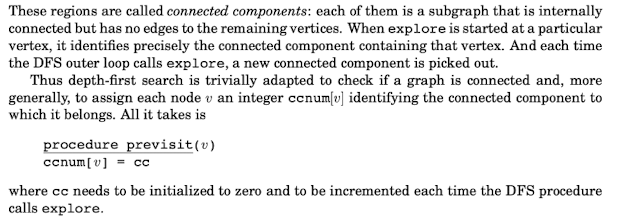Question
Implement the following algorithm strongly connected components algorithm in python: Given a directed graph G you first create the reverse graph GR in linear time.
Implement the following algorithm strongly connected components algorithm in python:


Given a directed graph G you first create the reverse graph GR in linear time. Next, you run the undirected connected components method from sec 3.2.3, processing the vertices in decreasing post order. You must make sure that both steps can be carried out in O(|V|+|E|) time. In more detail, carry out the following steps:
1. Create GR
2. Compute DFS interval on GR for each node
3. Iteratively select the next unvisited node uu with highest post(u)post(u):
For each such u, use DFS on G to visit all nodes reachable from u and output this set as a connected component.
Your python script should read the graph file name from the command line. Each line of the graph file will have two integers representing a directed edge from u to v. You code should output all strongly connected components.
You cannot use any external python graph library. Do not implement an elaborate graph class either. Just use the adjacency list format to store the input graph. Make sure not to use sorting, otherwise the time will not be linear. You may need to increase the maximum recursion depth via the sys.setrecursionlimit call
PLEASE VERIFY IT WORKS BY RUNNING A TEXT FILE WITH THE FOLLOWING CONTENTS:  THE OUT PUT SHOULD BE SIMILAR TO:
THE OUT PUT SHOULD BE SIMILAR TO:

Step by Step Solution
There are 3 Steps involved in it
Step: 1

Get Instant Access to Expert-Tailored Solutions
See step-by-step solutions with expert insights and AI powered tools for academic success
Step: 2

Step: 3

Ace Your Homework with AI
Get the answers you need in no time with our AI-driven, step-by-step assistance
Get Started


